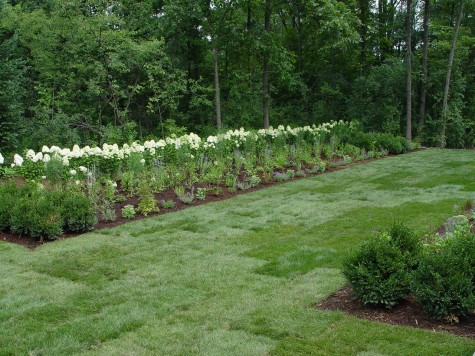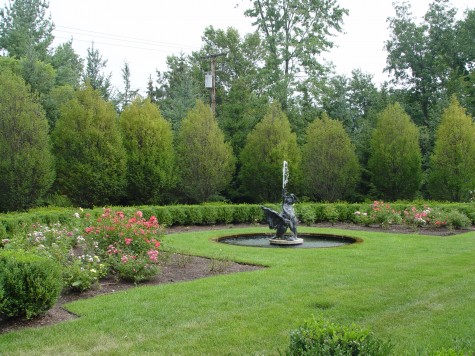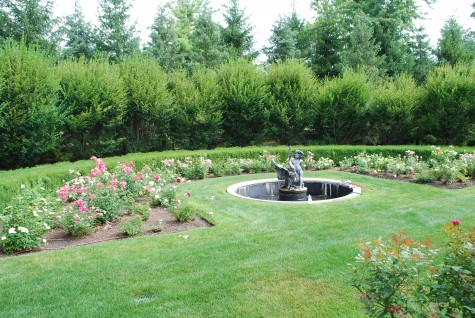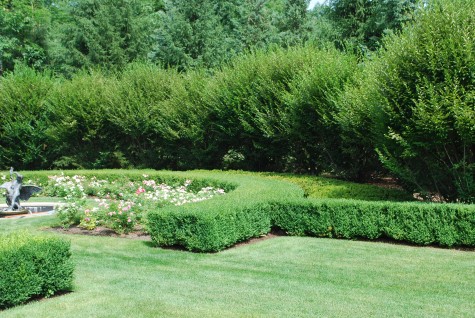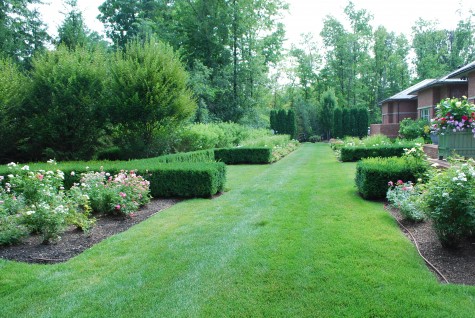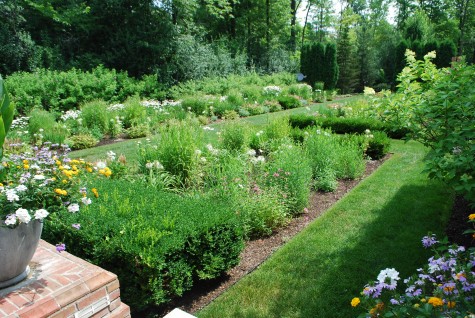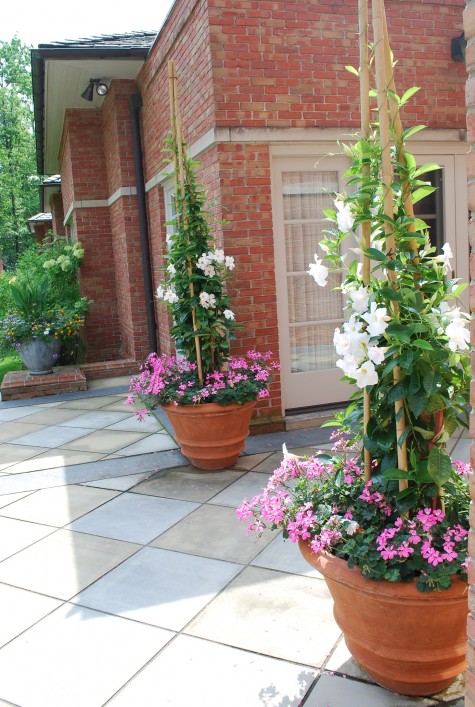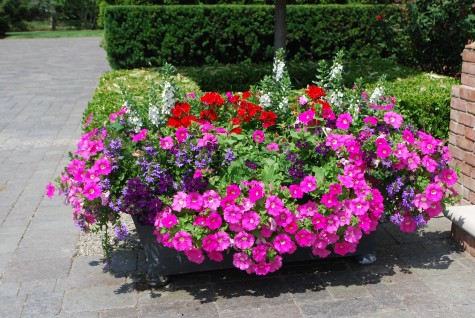Bear with me, as I am about to post for the umpteenth time about proper watering. I have just cause-most problematic issues I am dealing with now regarding the landscape have to do with water. A scheme for watering the plants has been the hottest topic of our season, given the high heat, and the utter lack of rain. I mean to discuss the water that your plants, garden, and landscape require. Thoughtful and dispassionately informed watering makes a difficult season more manageable. I hope by association to address the problems that arise from too much water. My clients who have not watered, or who have overwatered-we have a discussion pending,
Our August nights have been on the cool side- downright chilly. I ordinarily dial back the water when the nights cool off. This makes sense. Cool temperatures means water evaporates from the soil at a slower rate. Hot days do not tell the entire story. The night time story is a story line worth following. My advice? Ignore the day temperatures. Follow the night temperatures.
Overly wet soil under any circumstances, hot or cold, can result in root rot. Rotted feeder roots means that no matter how much water is available to absorb, the mechanism for that absorption has been destroyed. A plant with root rot cannot absorb any water from the soil. Your worried watering may be killing your plants. Why am I blathering on about the importance of proper watering? A misguided hose, watering can, or sprinkler system kills more plants than any other factor. Too much water kills more plants than drought, insects, or disease. Too much water can sicken and endanger an entire landscape.
Those gardeners that never water anything are not really gardeners. Those gardeners that water over and over again given a tough summer season are fearful gardeners. I understand that fear-I reacted to the steamy heat and dry with my hose, open full blast. But I see now that my off the top of my head reaction was harmful. Thoughtful watering makes for a great landscape and garden. As Buck says, be cool, and assess the situation. Being cool, and properly assessing the situation-a good thing. This is my theory. Cool off. Observe before you make a move. Water only when there is a call for water. Do not water solely thinking you will help plants suffering in the heat. Plants have an extraordinary will to live. A drink now and then will help them to survive. An ocean of water -they may drown.
Consider these simple examples. Japanese iris love wet ground-during their growing season, that is. Flooded fall and winter ground will kill them. Lavender can endure heavy clay-meaning astonishly water retentive soil-over the summer, but winter wet will kill them. Yews are a snap to grow, unless an overactive irrigation system drags them down, and eventually drowns them. Established landscape plants rarely need supplemental irrigation, unless there is a drought. Overwatered trees and shrubs will go yellow in leaf. Hydrangeas appreciate a regular source of water-it takes a lot for them to produce prodigious blooms of great size. Water them regularly. Smart watering makes the difference between a passable landscape-and a stellar landscape. Think through the wet and the dry-make a plan to endorse and follow that happy medium.
Angie supervises one of my crews. She is of the opinion that containers and plants should be watered first thing in the morning. This gives them the entire day to soak up, to make use of, that morning water. Once dusk comes, the warmth of the day has already absorbed the the day’s watering. The excess-so much steam. This is a theory, remember. This is a garden story that might make no sense scientifically, but could make emotional sense. Dryer, overnight, given cooler temperatures-a good thing. Good water during the day feeds the plants. Dryer at night ensures their survival. I like my summer container plantings to go on into the fall. Watching the water really carefully now will make a difference in their longevity.
I usually water my containers after work-this is when I have time. I load up the corgis at 6:15 most mornings-to go to work. They fuss if I am late serving breakfast-they really fuss if we do not leave on time. Given those dogs, I am not a morning waterer. Tonight I find that all of my containers have just enough moisture to survive until morning. If I water them tonight, they will be soaking wet in overnight chilly weather. I make a call – no water tonight. Tomorrow morning I will water-the corgis loaded up in the Suburban. I will load them in the car, and water what really needs water.
I read somewhere long ago that plants do most of their growing in the wee hours of the morning-meaning 4 until 6am. It makes sense that their roots need to be able to breathe then. My containers are the most water sensitive of any plants I grow. As I am interested that they grow on into the fall, I am interested in testing Angie’s theory. Water in the morning. Make the daytime evaporation rate work in the interest of enabling dryer and happier plants overnight-before morning.
Every gardener needs to carefully observe how their plants react to their care. Good observation makes for a really good garden. Great gardens are unquestionably more about care than design. Make every effort to get the water right.
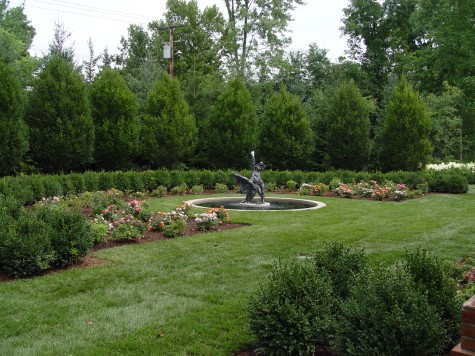
 On either side of this center section, simple lawn panels edged in boxwood. At the far ends, a pair of herbaceous borders on both sides of the lawn. The wild landscape in the background would be left as is, although there were a number of ash trees dead and dying which had to come down.
On either side of this center section, simple lawn panels edged in boxwood. At the far ends, a pair of herbaceous borders on both sides of the lawn. The wild landscape in the background would be left as is, although there were a number of ash trees dead and dying which had to come down. 